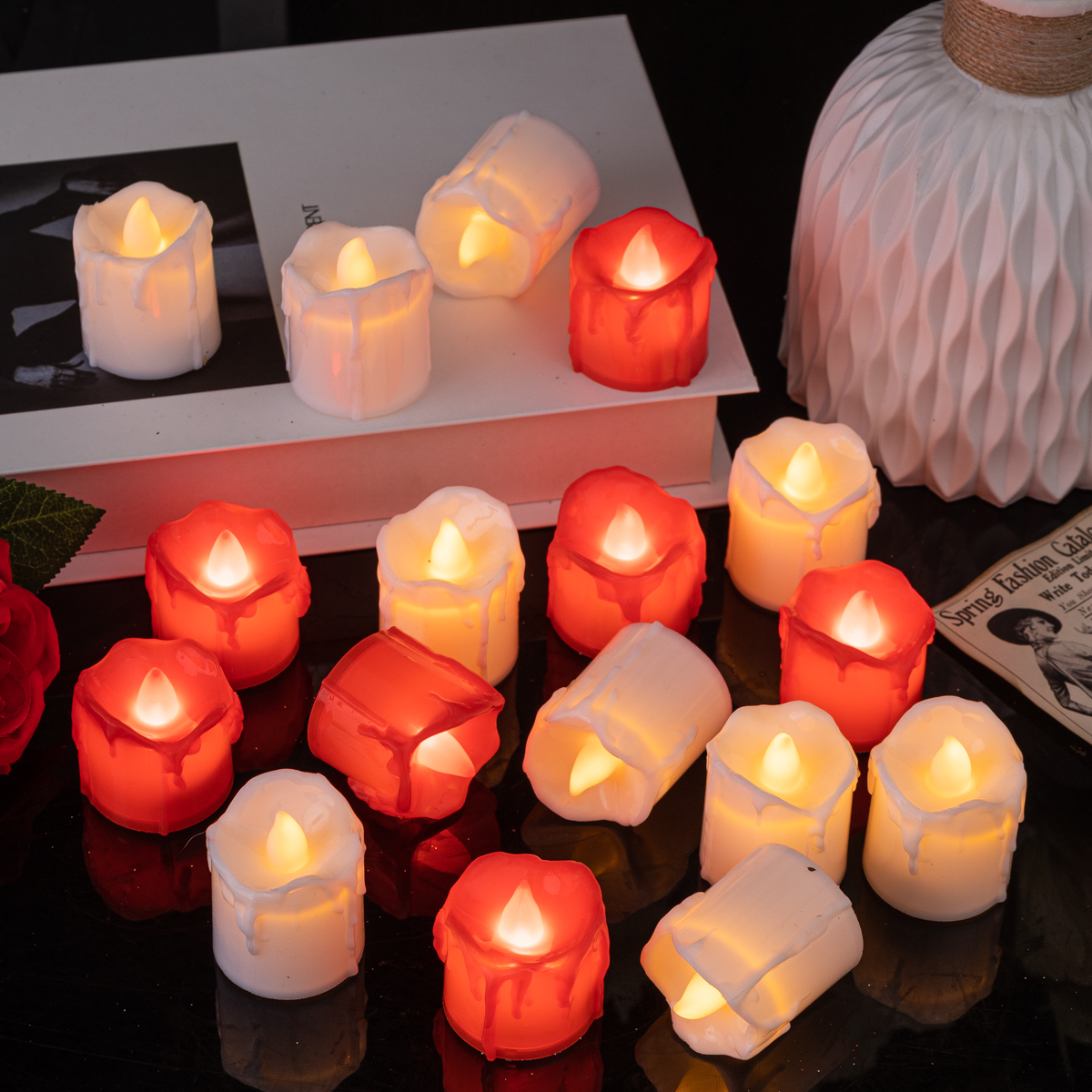Environmental Benefits of Modern LED Candle Technology
The lighting industry has witnessed a remarkable transformation with the introduction of plastic LED candles, revolutionizing how we think about sustainable illumination. These innovative devices combine the timeless appeal of traditional candles with cutting-edge technology, offering an eco-conscious alternative that's rapidly gaining popularity among environmentally aware consumers. As we delve into their features, we'll discover how these modern lighting solutions are helping reduce our carbon footprint while maintaining the warm, inviting ambiance we all cherish.
Core Components and Sustainable Materials
Advanced Recycled Plastic Construction
Modern plastic LED candles utilize high-grade recycled materials in their construction, significantly reducing the demand for virgin plastics. Manufacturers are increasingly incorporating post-consumer recycled (PCR) plastics into their production processes, ensuring that each candle contributes to the circular economy. These materials undergo rigorous quality control to maintain durability while minimizing environmental impact. The use of recycled plastics not only diverts waste from landfills but also requires less energy to produce compared to new plastic materials.
Energy-Efficient LED Technology
At the heart of these eco-friendly alternatives lies advanced LED technology. Unlike traditional wax candles, plastic LED candles consume minimal electricity while providing consistent illumination. The LED components are designed to last for thousands of hours, significantly reducing the need for frequent replacements. This longevity translates to fewer resources consumed over time and less electronic waste generated.
Sustainable Battery Solutions
Many plastic LED candles now feature rechargeable battery systems, eliminating the need for disposable batteries. This innovation dramatically reduces battery waste while offering convenient usage. Some models even incorporate solar charging capabilities, further reducing their environmental impact by harnessing renewable energy sources.
Environmental Impact and Safety Features
Zero Emissions Operation
Unlike traditional candles that release carbon dioxide and potentially harmful particles when burned, plastic LED candles operate with zero emissions. This feature makes them particularly beneficial for indoor air quality, especially in enclosed spaces where ventilation might be limited. The absence of smoke and soot also means cleaner walls and surfaces, reducing the need for cleaning products and their associated environmental impact.
Fire Safety and Risk Reduction
The safety features of plastic LED candles contribute significantly to their eco-friendly profile. By eliminating the risk of fire, these devices reduce the potential environmental damage caused by accidental fires. This aspect is particularly relevant in dry regions or during high-risk seasons when traditional candles pose increased hazards to both property and natural environments.
Longevity and Waste Reduction
Extended Product Lifecycle
The durability of plastic LED candles represents a significant advancement in sustainable lighting solutions. With proper care, these products can last for many years, substantially reducing the waste generated from disposable alternatives. The robust construction ensures resistance to physical damage, while the LED components maintain their performance over extended periods.
Minimal Maintenance Requirements
The low maintenance nature of plastic LED candles contributes to their environmental benefits. Unlike traditional candles that require regular replacement and generate waste from packaging and unused wax, LED alternatives need minimal upkeep. This reduced maintenance translates to fewer resources consumed throughout the product's lifecycle.
Smart Features and Energy Management
Automated Operation Systems
Modern plastic LED candles often incorporate smart features that optimize energy usage. Timer functions, motion sensors, and programmable settings allow users to customize operation periods, ensuring energy is only consumed when needed. These intelligent systems contribute to reduced power consumption and extended battery life, further enhancing the product's eco-friendly credentials.
Integration with Smart Home Systems
Advanced models of plastic LED candles can integrate with home automation systems, enabling precise control over lighting schedules and intensity. This connectivity allows for optimal energy management and reduces unnecessary power consumption, aligning with sustainable living practices.
Frequently Asked Questions
How long do plastic LED candles typically last?
Quality plastic LED candles can last for several years with proper care. The LED components themselves have a lifespan of approximately 50,000 hours, which translates to over five years of continuous use. With regular use, you can expect your LED candle to provide reliable service for 7-10 years.
Are plastic LED candles truly more environmentally friendly than traditional candles?
Yes, plastic LED candles offer significant environmental advantages over traditional wax candles. They eliminate smoke emissions, reduce fire risk, consume minimal energy, and have a much longer lifespan. When made with recycled materials and equipped with rechargeable batteries, their environmental impact is substantially lower than that of conventional candles.
What makes plastic LED candles cost-effective in the long run?
While the initial investment in plastic LED candles might be higher than traditional candles, their long-term cost benefits are substantial. They eliminate the need for frequent replacements, reduce energy consumption, and require minimal maintenance. When considering the extended lifespan and reduced replacement costs, plastic LED candles prove to be a more economical choice over time.
 EN
EN
 AR
AR
 FR
FR
 DE
DE
 IT
IT
 JA
JA
 KO
KO
 PT
PT
 RU
RU
 ES
ES
 LV
LV
 LT
LT
 VI
VI
 TH
TH
 MS
MS


